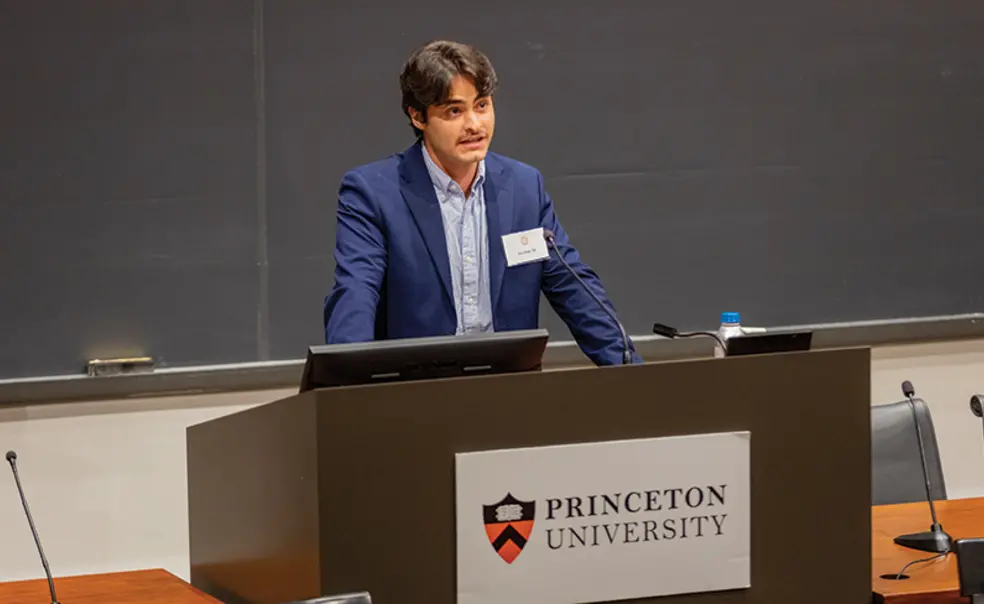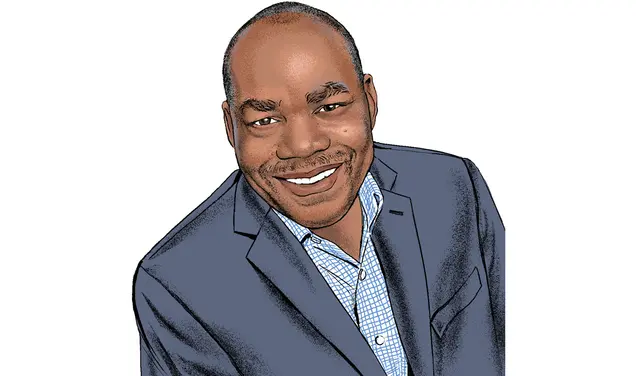Lessons in Constructive Dialogue From the USG President
Undergraduate Student Government President Avi Attar ’25 was one of several students who spoke in early November to a campus gathering of Princeton donors and volunteers on the topic of “constructive dialogue.” I was so impressed by Avi’s thoughtful observations that I asked him for permission to excerpt and share them with you here. I hope you come away as inspired and appreciative of Avi’s leadership as I did. — CLE
Just last week, my preceptor in AI Law and Policy divided the class into pairs to defend opposite sides of a debate motion. My classmates and I were forced to think on our feet, diagnosing the flaws in our arguments and moving toward a solution. I am happy to report that the thought-provoking, impassioned discussion we had that day is typical of Princeton’s emphasis on constructive dialogue in the classroom.
Constructive dialogue has also been an important part of my Princeton extracurriculars, sometimes in unexpected ways. On the sailing team, for example, our leadership elections can run from 7 p.m. to 2 a.m. Imagine the scene: thirty rowdy sailors wrapped up in seven hours of conversation to pick captains and officers. No matter how heated these meetings get, opinions and ideas are the most valuable currency.
I have even found space for debate in purely social settings. Recently, an impromptu poll in a group chat of my friends asked, “Who was the better president, FDR or Herbert Hoover?” Even when the conventional answer is obvious, there are always plenty of devil’s advocates on campus to spur a fun debate. At our next meal, people took both sides, and we had a great conversation. Indeed, whether it’s a lighthearted topic like Hoover v. FDR or a more serious one, like today’s politics, I have learned at Princeton to cherish friendships with those who think differently from me by supporting opportunities for open dialogue and, above all else, making sure that even the sharpest disagreements do not get in the way of relationships.
Nowhere have I learned more about how to engage in constructive dialogue than in my role as president of the Undergraduate Student Government. When I joined USG as a first-year, I was as skeptical as I was excited about some of our work. We would debate whether a new committee should be a “task force,” or an “ad hoc committee,” or a “core committee,” and I often struggled to understand why it mattered. To make matters worse, we used Robert’s Rules of Order to structure our conversations; otherwise normal conversations were punctuated by motions, points of inquiry, and other formalities. In these moments, I worried that we were overly focused on the form of the conversation rather than its substance.
However, I gained a new appreciation for this training last spring, when the campus turned its attention to activism around the Israeli-Palestinian conflict. I, alongside others in USG, navigated differences of opinion between USG members, hosted discussions with community members in conflict, and made tough decisions about statement-making and event planning — which we then had to justify to a range of students.
In these moments, I didn’t always know what to say, but I did know how to have the conversation. Debates in class, with friends, and in student government had taught me the importance of listening to others, being receptive to diverse perspectives, asserting my own views firmly but gently, and finding common ground. And superfluous as they may seem, I even found value in Robert’s Rules as a useful tool for ensuring everyone had the opportunity to share their views. The structure affirmed the importance of creating an environment in which students of multiple viewpoints feel comfortable speaking.
Last spring at Princeton showed me the importance of constructive dialogue in conflict, and I grew as a result of these experiences. I believe that those around me did too. After summer break, we convened a group of USG members, students, and administrators. What came next was a conversation that I suspect would have been more difficult last spring. Participants found common ground and identified mutually beneficial steps for the future, like updates to the Free Expression website.
Of course, there is work to be done. I have been dismayed by the acrimony on some college campuses outside the “orange bubble” these days, and I’m aware that our community could go down a similar path if we are not careful. I’m proud to say that we are being careful. Constructive dialogue is at the heart of the academic, extracurricular, and social experiences of so many Princetonians because it remains a core value of our community. The efforts of Princetonians to cultivate this value have served us well. Here’s hoping that going forward, we can expect the same and more from our incredible community.












1 Response
Frank Allen ’76
10 Months AgoPrinceton’s Limits on Constructive Dialogue
PAW’s January issue illustrated the moral vacuum that appears to exist at Princeton today. President Eisgruber turned over his page to an anodyne essay by a student who celebrated “constructive dialogue” and the use of Robert’s Rules of Order — who would oppose that? — but elided the moral imperative to take a stand when necessary. On the facing page PAW highlighted a letter from Ron Cohen ’77 lambasting the SPIA for allowing a human rights researcher to speak about the devastation in Gaza. Ms. Albanese reported in great detail about widespread human rights abuses by the Israelis and has stated that the Oct. 7 attacks were motivated not by antisemitism, as properly understood, but by the oppression of Palestinians. Calling this widely held view antisemitic is a backdoor way to suppress speech and distract from the horrors in Gaza. Mr. Cohen stopped just short of demanding the speaker’s cancellation but censured the University for allowing her to speak. What happened to the “constructive dialogue” so celebrated on the prior page? Why was his letter selected for prominence?
I was at the 1973 debate Mr. Cohen referred to where Shockley made his infantile arguments. There were protesters outside and inside but — in a triumph for free speech that I was there to defend — the debate went on. The ongoing ethnic cleansing of Palestine and wholesale murder of thousands of innocent people bankrolled, armed, and facilitated by the U.S. government will go down as one of the great crimes of this century. But at the Princeton of today the vast majority of students are silent, either by choice or by intimidation. The University’s response to a several hour occupation to protest Israel’s war crimes was to arrest the students. Contrast this with the 2016 Black Justice League protest that occupied the president’s office for 33 hours and where President Eisgruber bent over backwards to accommodate students who had shouted him down. For some reason the protesters of an indiscriminate bombing campaign that has killed and maimed tens of thousands, including a horrendous number of children, get a very different treatment. For them the University has chosen to facilitate a municipal prosecutor taking them to court. It is not hard to see that calls for “constructive dialogue,” such a lovely and important phrase, can be seen, in cynical hands, as just code for “speak the wrong words or protest injustice and the hammer will be brought down.”